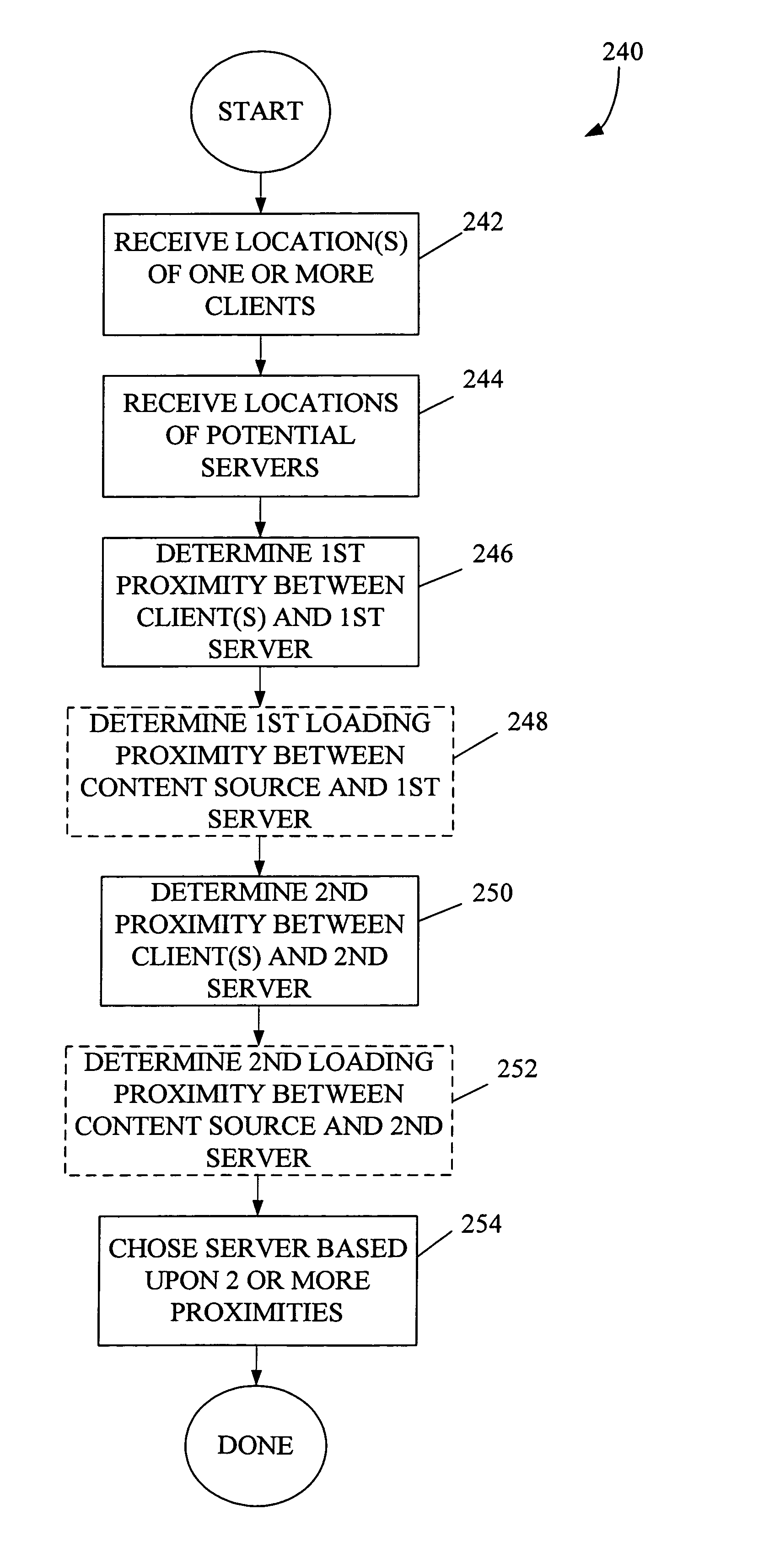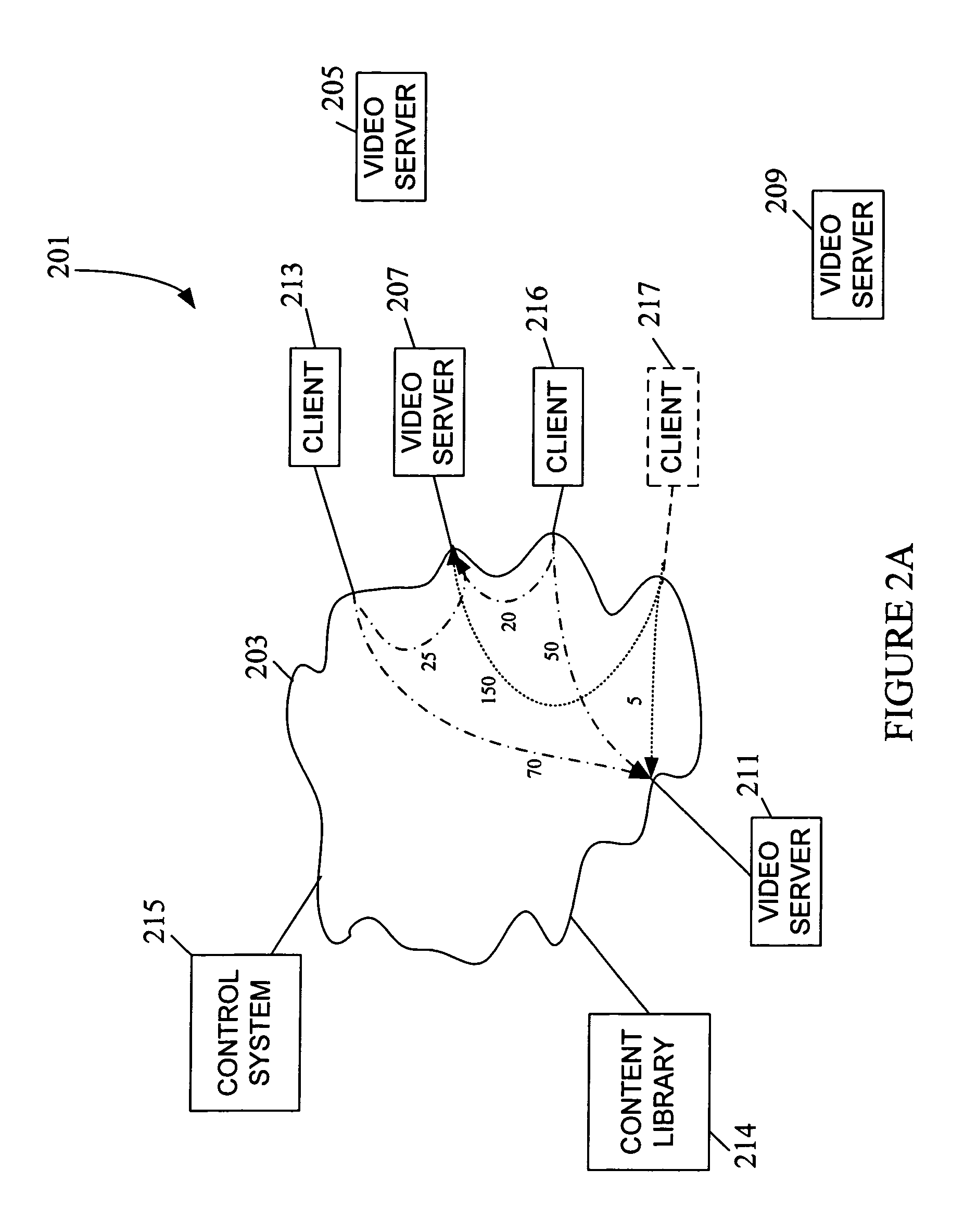Proximity as an aid to caching and secondary serving of data
a technology of proxy and data, applied in the field of network technology, can solve problems such as network bottlenecks, video content is particularly challenging, video programming may have trouble meeting a client's demands,
- Summary
- Abstract
- Description
- Claims
- Application Information
AI Technical Summary
Benefits of technology
Problems solved by technology
Method used
Image
Examples
Embodiment Construction
[0028]This invention involves propagating content over a network based upon proximity. The timing and destinations of such transfers may be based upon the relative proximity of content libraries to content servers (e.g., video servers), content servers to clients (e.g., set top boxes), other content suppliers to content consumers, content servers to other content servers or to locations where a content server function could be instantiated. Typically, though not necessarily, content is moved to facilitate service to clients by one or more servers. Client / server environments, content servers, and networks are well documented in the technical, trade, and patent literature.
[0029]As used herein, the term “content” refers to any data that may be provided by a server to a client over a network in order to fill a client request. Of particular interest is content that is relatively voluminous and must be delivered rapidly. Examples include video titles such as movies, TV shows, music record...
PUM
 Login to View More
Login to View More Abstract
Description
Claims
Application Information
 Login to View More
Login to View More - R&D
- Intellectual Property
- Life Sciences
- Materials
- Tech Scout
- Unparalleled Data Quality
- Higher Quality Content
- 60% Fewer Hallucinations
Browse by: Latest US Patents, China's latest patents, Technical Efficacy Thesaurus, Application Domain, Technology Topic, Popular Technical Reports.
© 2025 PatSnap. All rights reserved.Legal|Privacy policy|Modern Slavery Act Transparency Statement|Sitemap|About US| Contact US: help@patsnap.com



